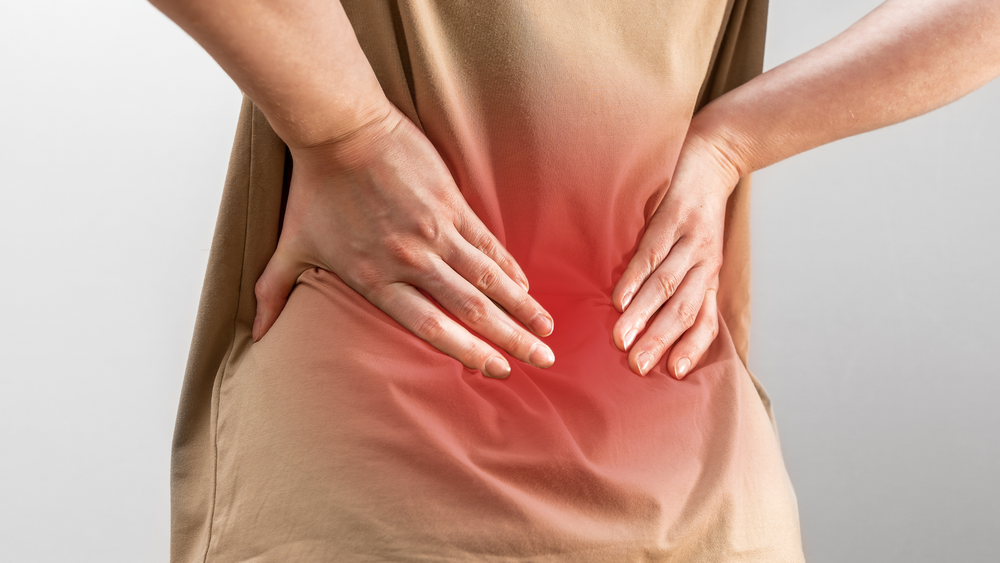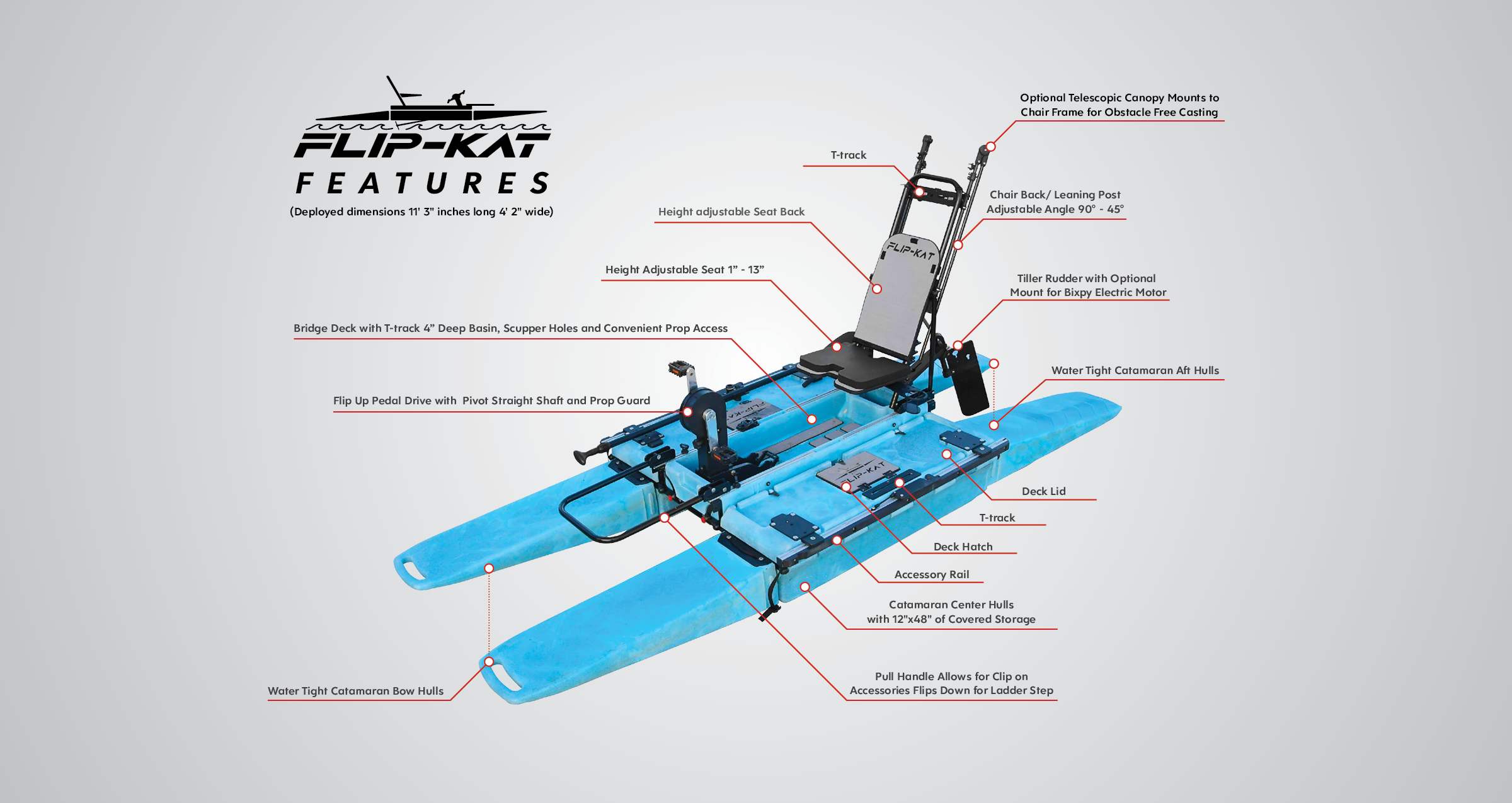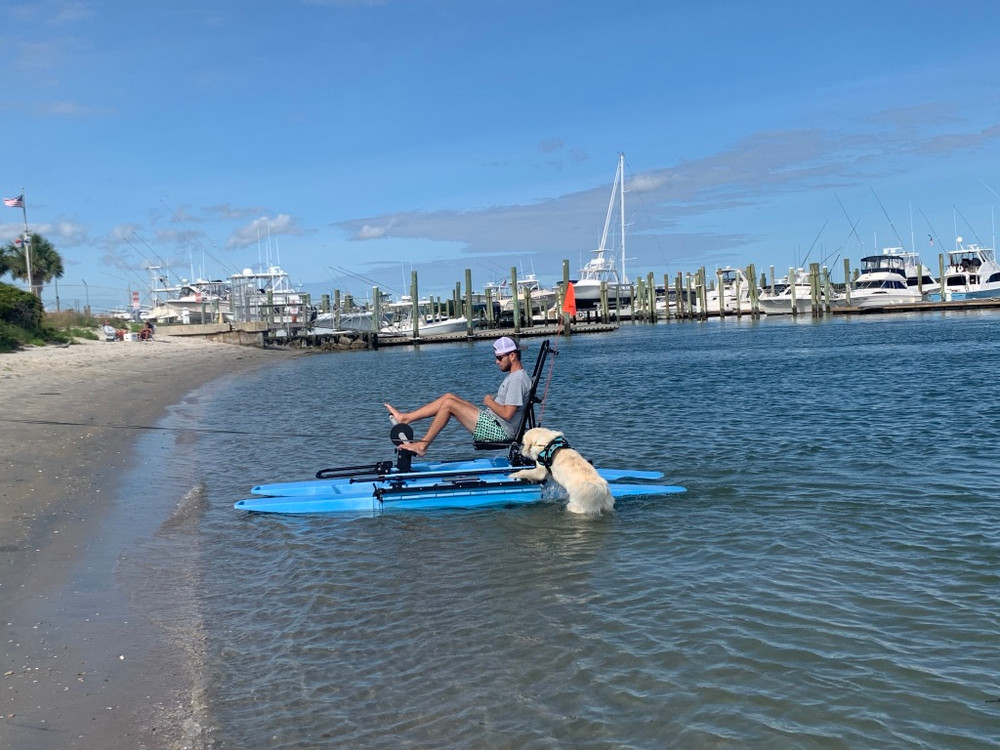A Guide to Kayaking with Back Pain or Injuries
20th Apr 2024
Table of Contents:
- Understanding Back Pain and Injuries in Kayaking
- Preparing For Kayaking With Back Conditions
- Optimizing Your Kayaking Technique to Avoid Back Pain
- The Flip-Kat® Advantages for Kayakers With Back Pain
- Navigating Your Purchase
- Pros and Cons of Buying a USA Made Kayak or Canoe
- Conclusion - Making an Informed Decision
Understanding Back Pain and Injuries in Kayaking
Kayaking is a fantastic way to exercise and stay in great shape. You can do this all while enjoying the great outdoors. It is one of the most enjoyable activities, and it can take you to remote places seen by only a few other individuals. Kayaking can be great for improving strength and the muscles in all sorts of different areas of your body. The major muscle groups worked while on a traditional kayak include the core, biceps, triceps, lats, shoulders, back, and legs. If you want a whole-body exercise, hop on a kayak and paddle. Some kayaks are pedal-driven, similar to riding a bike. These kayaks work all the muscles in your legs and core. However, poor forms of kayaking have been known to cause lower back pain and injuries. Focusing on good form and base-level fitness is key to having a fantastic day out on your kayak.

Your back is made up of 33 bones called vertebrae. Between these bones is a jelly-like substance that supports them. A herniated disc occurs when the vertebrae are pushed through the support. This type of injury can happen if you frequently ride a traditional kayak. Most commonly, it is a degenerative injury, meaning the more you work the discs and put them in a vulnerable place, the more susceptible you are to this injury. Sitting in a traditional kayak for extended periods without the proper support puts you at a higher risk of herniated discs.
Another common injury in kayaking is muscle strain. This occurs when you misuse the muscle or overwork it. The shoulder and back are the most susceptible to this injury. You must have the correct paddling form to avoid overusing and misusing the muscles. The best way to ensure this doesn't happen to you is to pick out a kayak that better fits you and is in good physical condition with proper paddling form.
Sciatica is a shooting pain in one or both of your legs. This is caused by the nerve endings getting pinched, commonly from back injuries like herniated discs. This is seriously uncomfortable when trying to enjoy a nice day out on your kayak and would put a damper on the day. With the right equipment and setup, you can limit your sciatica and prevent it from occurring while kayaking.
View this post on Instagram
Preparing For Kayaking With Back Conditions
Like any type of exercise, you can enjoy it more when you are in better shape. This holds true for kayaking and other activities. The better shape you are in, the longer you can spend on the water and travel further distances. It is also important to be in good shape to prevent injuries. When your muscles get tired, they tend to get lazier. This can lead to poor form and development of muscle strains and injuries.
Developing a pre-kayaking routine of stretching and warming up before you get out on the water is a great idea. This way, you will be nice and loose, helping prevent any injury from tightness. Some great stretches to do before kayaking include:
- Outer back stretch
- Touch your toes
- Hamstring stretch
- Outer thigh and hip stretches
- Lunges with twists
Choosing The Right Kayak For Back Support
Seat configuration is the most important factor to look for in kayaks when you have a back injury. Having the correct setup will ensure a future of pain-free kayaking. All kayaks have different set-ups, and some even have adjustable seats, so, like a car, you can manipulate the seat to fit your needs best. Look at all kayak seat options and test-ride them before purchasing.
Endless hours of design and testing have gone into the perfect seat set-up on the Flip-Kat®. Our ergonomic design is ideal for anyone who wants to prevent back pain and enjoy the water. The pedal drive system is also adjustable to maximize customization, so everything is as comfortable as possible. The Flip-Kat® can also be configured to paddle with a leaning post. It has all of the adjustable features that someone with back pain would want to enjoy the freedom of the outdoors.
View this post on Instagram
Optimizing Your Kayaking Technique to Avoid Back Pain
To enjoy the water more, adopting the correct paddling form is essential. Poor form can lead to all sorts of bad habits in the water and can develop into injuries. Some things that you should keep in mind while practicing paddling in a traditional kayak are:
- Secure and light grip on the paddle
- Having your paddle correctly oriented
- Sit up with good posture
- Forward and backward strokes
- Focus on using the muscles in your core and back
Some kayaks, like the Flip-Kat®, have an adjustable seat and operation system. This allows you to create a perfectly comfortable set-up for your body. However, other kayaks do not have this luxury. You can focus on sitting up straight and having good posture to ensure better kayaking form. It is important to have good core strength to spend extended periods in this position.
On Water Strategies to Manage Back Pain
Building your fitness level through shorter kayaks is best if you are just starting kayaking or coming off a back injury. After developing some endurance and strength, you can start spending more time on the water and endure longer kayaking journeys. Before departing on your kayak, plan some spots to take breaks. If your back starts to act up while riding, take a break and stretch
On traditional kayaks, there are options to add foot pedals to prop up your feet. This can help you sit up properly, creating a sustainable posture for far-kayaking adventures. There are also options for stronger back supports and cushions to alleviate back pain.
View this post on Instagram
After Kayaking Care For Back Health
It is essential to have a post-kayaking routine to preserve your back’s health. It is often hard to commit to, but the benefits will keep you on your kayak longer than if you didn’t. This post-kayaking routine can include various stretches and movements to improve muscle soreness. It doesn’t have to be a long process. If you spend ten minutes, your recovery process will be game-changing.
If you have muscle pain that exceeds your pain threshold, be sure to seek medical advice. Never put yourself in a position where you cannot paddle back home. If you have severe back pain, talk to your doctor before going on any kayaks.

The Flip-Kat® Advantages for Kayakers With Back Pain
The Flip-Kat® is the perfect kayak for users with back pain or anyone who wants to prevent back pain while kayaking. It is designed with an ergonomic seat and is customizable for your situation. The Flip-Kat® also has an adjustable pedal drive system. This allows individuals to set up their kayak perfectly for maximum comfort. If you need to stand while kayaking, the Flip-Kat® is the perfect kayak for you. The adjustable seat can be turned into a leaning post, so you can relax while paddling. The catamaran hull design creates the most stable platform for standing and paddling. Overall, if you have back pain or want to prevent future back pain, the Flip-Kat® is the perfect kayak for you.












